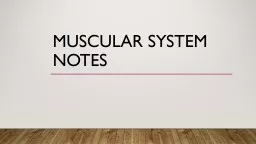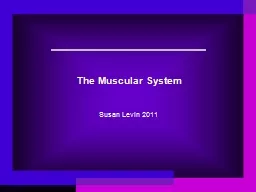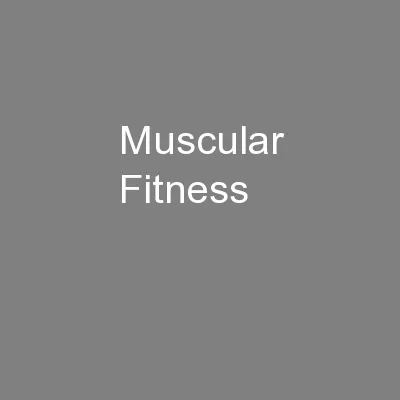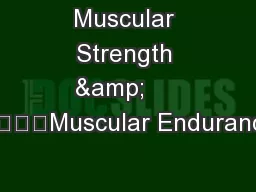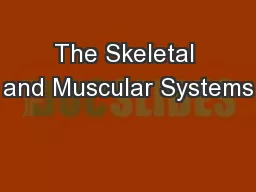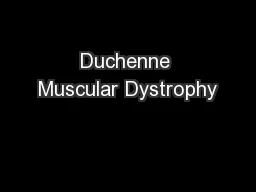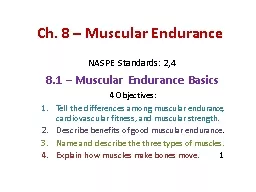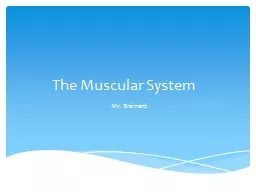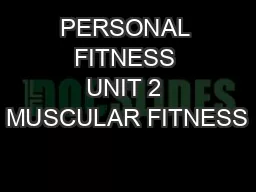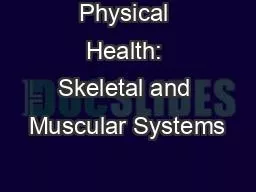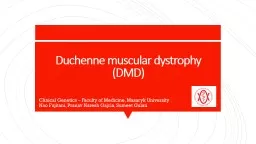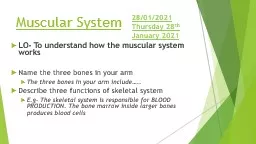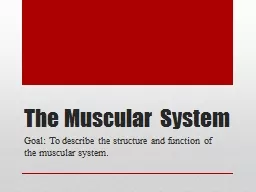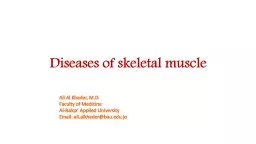PPT-Muscular System Notes Muscle Facts
Author : WonderfulWarrior | Published Date : 2022-08-01
The tongue is the strongest muscle in the body relative to size There are about 640 skeletal muscles in the human body It takes twice as long to lose new muscle
Presentation Embed Code
Download Presentation
Download Presentation The PPT/PDF document "Muscular System Notes Muscle Facts" is the property of its rightful owner. Permission is granted to download and print the materials on this website for personal, non-commercial use only, and to display it on your personal computer provided you do not modify the materials and that you retain all copyright notices contained in the materials. By downloading content from our website, you accept the terms of this agreement.
Muscular System Notes Muscle Facts: Transcript
Download Rules Of Document
"Muscular System Notes Muscle Facts"The content belongs to its owner. You may download and print it for personal use, without modification, and keep all copyright notices. By downloading, you agree to these terms.
Related Documents

